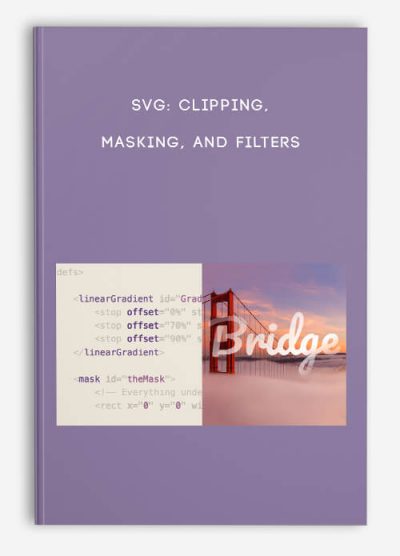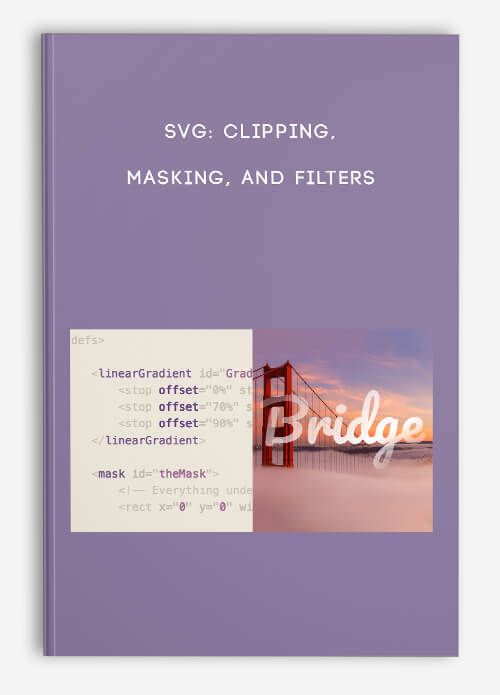SVG: Clipping, Masking, and Filters
$35.00
- Description
Description
SVG: Clipping, Masking, and Filters
**More information:
Get SVG: Clipping, Masking, and Filters at bestoftrader.com
Description
What is clipping and masking and why should we care about it?
Both clipping and masking obscure areas where elements in an SVG or HTML element can be visually applied. You use a bit of SVG designated as a <clipPath> or <mask> by wrapping the element and applying an id, like so:
Though no demo of these techniques will rival Yoksel‘s version, which is comprehensive not just to SVG but to CSS versions of clipping and masking as well:
These techniques are so useful because we can show and hide bits of content, which we can use for unique layouts, realism in animation, and performant alternatives to height transitions.
Clipping
Think about <clipPath> in SVG (or clip-path in CSS) as a way to cut a shape out of another shape. There’s no concept of opacity, or alpha channel, to gray area here. Parts of the element with a clipping path applied are literally visible or not visible. Clipping just uses the geometry of the shape. Because of this, certain visual elements won’t be applied. This includes, but is not limited to: stroke and stroke styles, gradients, and fill colors.
You can still, however, animate these visual elements, change their attributes, and apply transforms to them, these will still be honored. Remember that when you animate them you need to target the elements inside the <clipPath>. Another thing to keep in mind is that the pieces that are clipped away won’t accept pointer events, so events can only be captured on the parts that you can visually see.
Check out the Wall-e demo below. Do you see how the arms are being obscured as they reach out and then tuck back into the body? In order to realistically hide and show that arm, we will need to obscure it as it moves. In this case, we made a clipPath out of the elbow curve and clipped pieces of the arm as it extended.
It doesn’t end there, of course, we can apply this technique to more sophisticated effects, such as this amazing x-ray machine from Noel Delgado:
Masking
Think about masking as a way to apply complex, detailed, and shapes with varying opacity over another element. This can lead to really beautiful visual effects and performant alternatives to other techniques. For instance, animating gradients can be really CPU-intensive. But in the graphic below, we’re animating the mask instead of the gradient to the same visual effect, and it’s a lot less heavy.
Because SVG supports text and each piece is editable, we can also create interesting effects to show and hide pieces of data that are changing. Check out this demo from Craig Roblewsky:
Unlike clipping, masking does respect stroke and stroke effects, but keep in mind that in a mask, it will treat white as an area that will be shown and black as an area to be masked, with the greyscale exposing each along that scale.
This means, though, that you can use gifs with white and transparency to create masks that expose really cool effects:
I learned everything I needed to learn to make the above demo from Yoksel, who has a vast collection of pens with this technique, here’s one I particularly like with a bird and a gradient, and a subtle texture in the background.









